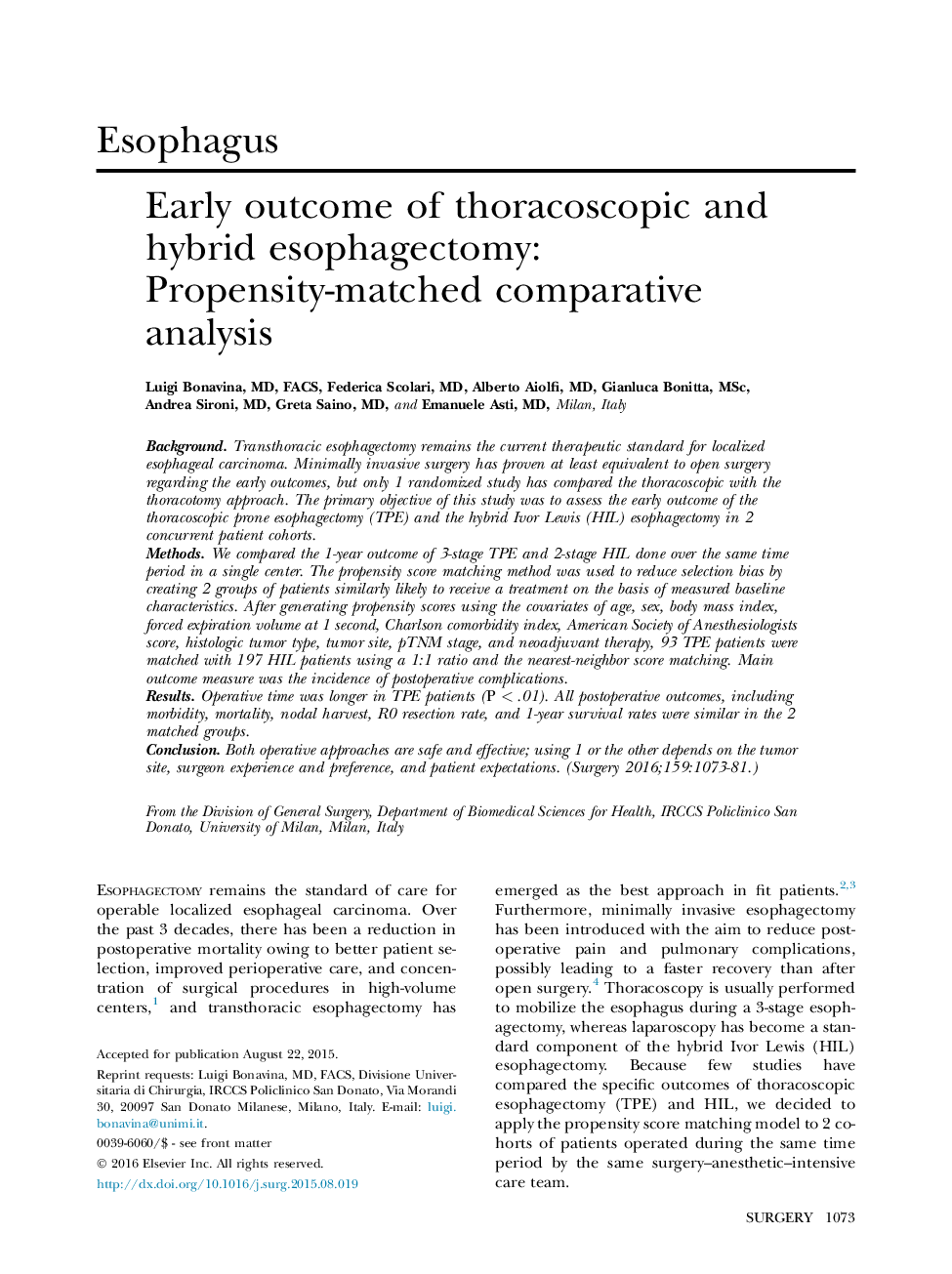| Article ID | Journal | Published Year | Pages | File Type |
|---|---|---|---|---|
| 4306497 | Surgery | 2016 | 9 Pages |
BackgroundTransthoracic esophagectomy remains the current therapeutic standard for localized esophageal carcinoma. Minimally invasive surgery has proven at least equivalent to open surgery regarding the early outcomes, but only 1 randomized study has compared the thoracoscopic with the thoracotomy approach. The primary objective of this study was to assess the early outcome of the thoracoscopic prone esophagectomy (TPE) and the hybrid Ivor Lewis (HIL) esophagectomy in 2 concurrent patient cohorts.MethodsWe compared the 1-year outcome of 3-stage TPE and 2-stage HIL done over the same time period in a single center. The propensity score matching method was used to reduce selection bias by creating 2 groups of patients similarly likely to receive a treatment on the basis of measured baseline characteristics. After generating propensity scores using the covariates of age, sex, body mass index, forced expiration volume at 1 second, Charlson comorbidity index, American Society of Anesthesiologists score, histologic tumor type, tumor site, pTNM stage, and neoadjuvant therapy, 93 TPE patients were matched with 197 HIL patients using a 1:1 ratio and the nearest-neighbor score matching. Main outcome measure was the incidence of postoperative complications.ResultsOperative time was longer in TPE patients (P < .01). All postoperative outcomes, including morbidity, mortality, nodal harvest, R0 resection rate, and 1-year survival rates were similar in the 2 matched groups.ConclusionBoth operative approaches are safe and effective; using 1 or the other depends on the tumor site, surgeon experience and preference, and patient expectations.
